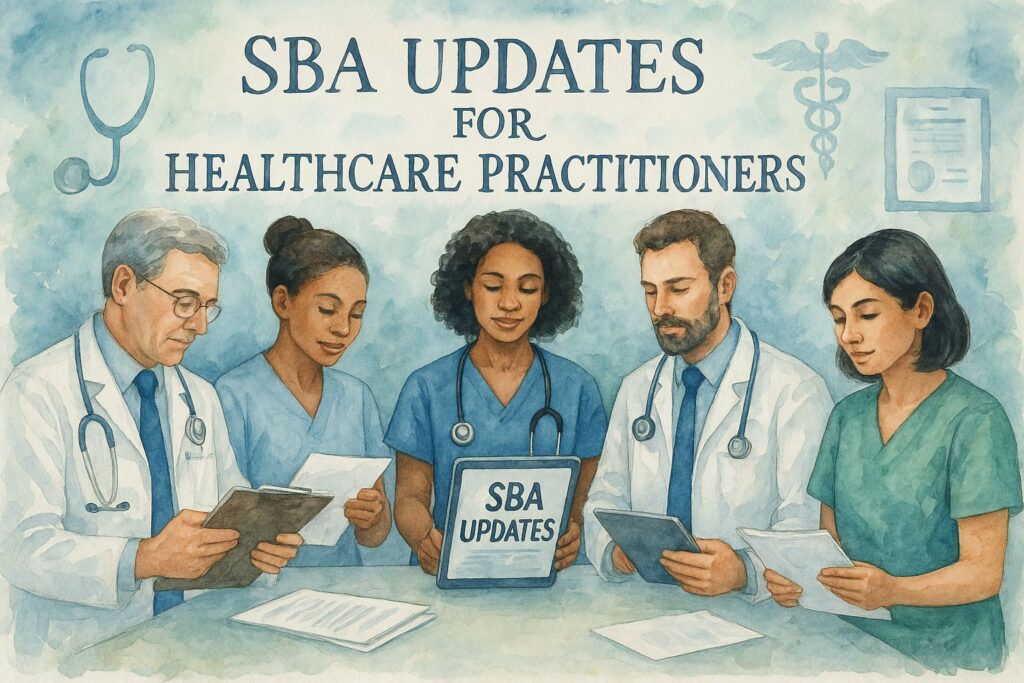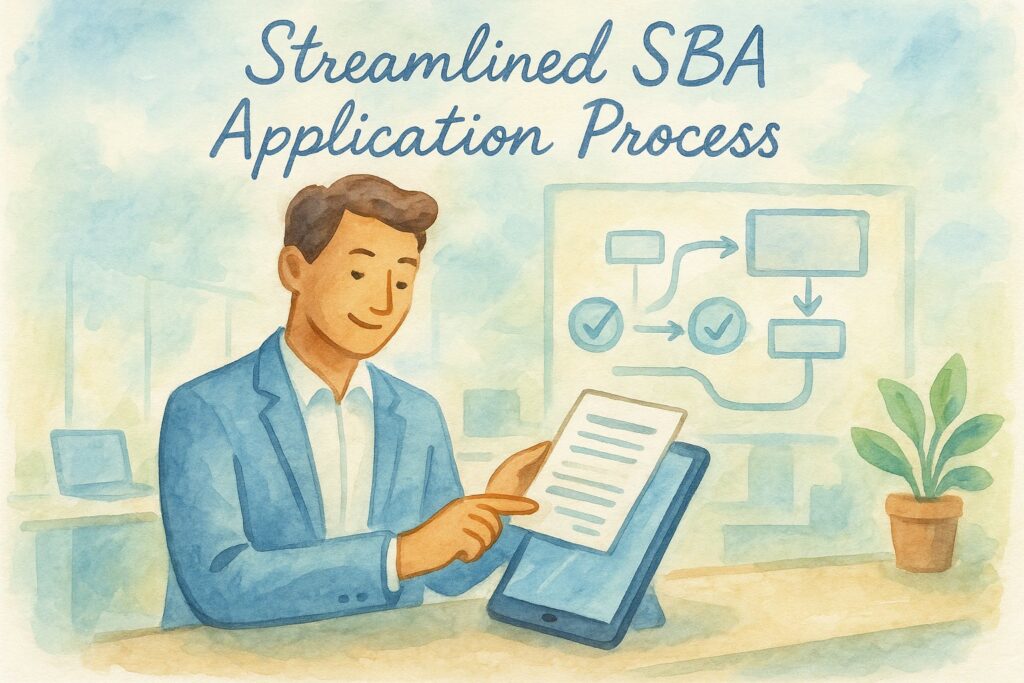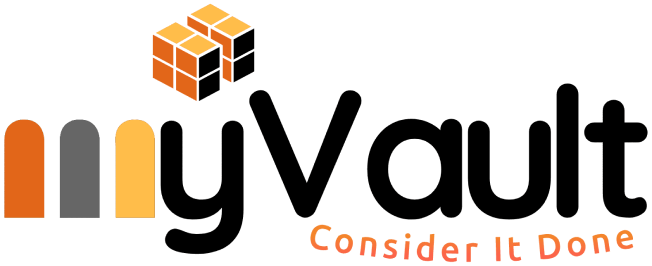
Securing financing for a medical or dental practice has often felt like navigating a maze of paperwork and strict requirements. Recent SBA loan updates change that by making the process more straightforward and accessible. You can now take advantage of streamlined applications and reduced barriers that make it easier to secure the capital needed to grow or stabilize your practice.
These changes matter because healthcare providers like doctors, dentists, and therapists often need flexible funding to expand facilities, upgrade equipment, or manage working capital. With simplified procedures and higher loan caps for certain lenders, you gain faster access to funds without being weighed down by unnecessary delays.
By lowering costs and easing requirements, SBA loans now give healthcare professionals a more reliable path to financing. Whether you’re planning to open a new clinic, purchase real estate, or improve patient care with modern equipment, these updates put more opportunities within reach.
Key Takeaways
- SBA loan updates simplify access to financing for healthcare practices
- Streamlined processes reduce time and barriers in applications
- Healthcare professionals gain greater flexibility to fund growth and improvements
Latest SBA Loan Updates for Healthcare Providers

You now have more streamlined options to secure SBA-backed financing. Updated rules reduce paperwork, clarify eligibility, and adjust loan terms to better fit the needs of medical, dental, and therapy practices.
Recent Policy Changes Impacting Healthcare Financing
The SBA has simplified its loan application process, cutting down on redundant documentation. You no longer need to provide multiple years of detailed cash flow projections for smaller loan requests, which speeds up approval.
For healthcare providers, this means faster access to working capital. You can use these funds for payroll, equipment upgrades, or practice expansion without waiting months for approval.
Another important change is the adjustment in repayment flexibility. Some programs now allow temporary payment reductions if your practice experiences revenue fluctuations. This provides a safety net while maintaining compliance with loan terms.
The SBA has also expanded lender participation. More banks and alternative lenders now process SBA loans, giving you a wider choice of financing partners. This reduces the risk of delays caused by limited lender availability.
Key Differences in 2025 SBA Loan Guidelines
The 7(a) loan program remains the most widely used option for healthcare providers. In 2025, loan limits and eligible uses remain broad, but you benefit from clearer rules on acceptable expenses. You can now apply funds more easily toward telehealth technology, digital record systems, and specialized medical equipment.
Collateral requirements have also been adjusted. For loans under $500,000, you may not need to pledge personal real estate, which lowers the barrier to entry for smaller practices.
Interest rate structures remain tied to the Prime Rate, but caps have been revised to give lenders more flexibility while keeping borrower protections in place. This may result in slightly varied terms, depending on your lender, but still ensures predictable repayment.
The SBA has also emphasized quicker turnaround times. Lenders are now encouraged to use digital verification tools to confirm eligibility, cutting processing delays that previously slowed down disbursement.
Eligibility Criteria for Doctors, Dentists, and Therapists
You must operate as a small business under SBA size standards to qualify. Most independent practices, including solo practitioners and small group practices, meet these requirements.
Eligible providers include physicians, dentists, physical therapists, occupational therapists, and mental health professionals. Your practice must operate legally in the United States and demonstrate the ability to repay the loan.
Credit history remains a factor, but SBA guidelines now allow greater flexibility for applicants with limited credit depth, provided your practice shows consistent revenue. This is especially useful for newer providers just starting out.
Certain uses of funds are restricted. You cannot use SBA loans for personal expenses, investment properties, or speculative activities. Instead, approved uses include payroll, rent, working capital, or equipment purchases.
If you have existing SBA COVID-EIDL loans, you may still qualify for new financing, though repayment obligations are considered in your eligibility review. This ensures you can responsibly manage multiple obligations without overextending your practice.
Streamlined Application Processes

Healthcare providers now face fewer administrative barriers when pursuing SBA loans. Updated lending rules emphasize efficiency, reducing paperwork, shortening wait times, and introducing technology-driven options that let you complete much of the process online.
Simplified Documentation Requirements
You no longer need to prepare extensive binders of supporting material to apply. SBA programs have eased requirements by focusing on essential documents such as tax returns, basic financial statements, and a clear business plan.
For many providers, this means less time spent gathering paperwork and fewer requests for supplemental records. Dentists or therapists expanding their offices often benefit because the streamlined checklist reduces delays caused by missing forms.
Key documents often required now include:
- Two to three years of tax returns
- Profit and loss statements
- Balance sheets
- Business plan with revenue projections
By keeping the list concise, lenders can review applications more quickly and you can avoid the back-and-forth that often slowed approvals in the past.
Faster Approval Timelines
Recent SBA updates have also shortened review periods. In some cases, lenders can provide credit decisions in days rather than weeks, especially for loans under $500,000.
This faster pace matters when you need to secure equipment, lease space, or hire staff without long delays. For example, a medical practice adding diagnostic tools benefits from the ability to move forward before competitors capture patients.
Typical timeframes now look like:
- Express loans: 36 hours for initial response
- Standard 7(a) loans: 5–10 business days
- Larger loans: 2–3 weeks with complete documentation
These reduced timelines give you greater certainty in planning expansions or covering working capital needs.
Digital Application Platforms
Most SBA lenders now provide online portals where you can upload documents, track progress, and communicate with underwriters. This eliminates the need for in-person visits and reduces errors caused by manual submissions.
Digital tools allow you to complete applications outside business hours, which is especially useful if you run a busy practice. You can also receive automated updates when your file moves to the next stage.
Advantages of digital platforms include:
- Secure document upload and storage
- Real-time application status tracking
- Integrated communication with loan officers
- Faster corrections if issues arise
By using these platforms, you can manage the process more efficiently and reduce disruptions to your daily patient schedule.
Reduced Barriers to SBA Loan Access

Healthcare providers often face challenges with traditional lending because of strict credit requirements, high collateral demands, and narrow restrictions on how funds may be used. Recent SBA loan updates reduce these obstacles, making financing more practical for doctors, dentists, and therapists who need capital to expand or stabilize their practices.
Lower Credit Thresholds
You no longer need near-perfect credit to be considered for SBA-backed financing. The SBA has modernized its credit evaluation standards, allowing lenders to approve loans with a more flexible review process. Instead of relying heavily on a single credit score, lenders now look at repayment history, cash flow, and overall financial health.
This change benefits healthcare professionals who may carry student loan debt or have uneven income due to insurance reimbursements. A strong business model and consistent revenue can now weigh more heavily in your favor.
For example, a dentist with moderate personal credit but steady practice revenue may now qualify where previously denied. This shift opens opportunities for providers who demonstrate reliable performance but fall short of older, rigid credit benchmarks.
Flexible Collateral Options
Collateral requirements have often discouraged small healthcare practices from applying for loans. Many providers lack large physical assets, especially those who lease office space or rely mainly on specialized equipment.
The SBA has eased collateral standards, enabling you to secure financing without pledging significant personal or business property. Lenders may now accept partial collateral coverage or focus more on projected cash flow rather than asset value.
This flexibility reduces personal financial risk. For instance, a therapist operating a counseling practice with minimal equipment can apply without needing to pledge a home or retirement account. By lowering collateral hurdles, the SBA makes loans accessible to service-based providers with fewer tangible assets.
Expanded Use of Funds
SBA loans now cover a broader range of expenses, giving you more freedom to apply funds where they are most needed. Beyond equipment purchases or real estate, you can use financing for working capital, technology upgrades, or even practice acquisitions.
Healthcare providers often need funding for specialized software, electronic health record systems, or hiring additional staff. These costs are now eligible under expanded guidelines.
You can also use funds for refinancing higher-interest debt, which can improve cash flow and reduce long-term costs. This flexibility allows you to adapt financing to the specific needs of your practice rather than being limited to narrow categories of approved expenses.
Benefits and Impacts for Healthcare Practices

Access to SBA loans allows you to expand your practice, invest in modern facilities, and improve patient services. These financing options reduce barriers to capital, making it easier to manage costs while maintaining independence as a healthcare provider.
Improved Practice Growth Opportunities
With updated SBA loan programs, you can pursue growth plans that may have been delayed due to limited funding. Lower equity requirements and more flexible terms give you the ability to expand your office space, add new treatment rooms, or open a second location.
Financing can also support practice acquisitions. If you are looking to buy an existing clinic, SBA 7(a) loans provide funding for both the purchase and working capital needs. This makes transitions smoother and helps you retain patients during ownership changes.
In addition, you can use funds for equipment purchases. Whether you need digital imaging devices, therapy machines, or upgraded IT systems, SBA loans cover these costs without requiring large upfront payments. This reduces financial strain and allows you to allocate resources more efficiently.
Enhanced Patient Care Through Capital Access
When you secure affordable financing, you gain the ability to invest directly in patient care. Upgrading diagnostic tools, expanding exam rooms, or adding specialized services improves the quality of treatment you provide.
For example, SBA 504 loans are often used for real estate purchases. Owning your facility gives you control over layout and design, allowing you to customize the space for better patient flow and accessibility. This can reduce wait times and improve the overall patient experience.
Capital access also enables you to hire more staff. Adding nurses, therapists, or administrative support helps you handle higher patient volumes without sacrificing quality. By easing the financial burden of expansion, SBA loans allow you to focus on clinical outcomes rather than constant budget concerns.
Case Examples of Successful Financing
Many healthcare providers have used SBA loans to strengthen their practices. A dentist may use a 7(a) loan to purchase digital X-ray machines, reducing radiation exposure and improving diagnostic accuracy.
A physical therapist could secure a 504 loan to buy a larger facility, creating space for specialized rehab equipment. This not only improves patient outcomes but also increases the number of patients served.
In another case, a small medical group might refinance existing high-interest debt through an SBA loan. By lowering monthly payments, they free up cash flow to invest in staff training or community outreach programs. These examples show how targeted financing directly supports both business stability and patient care.
Frequently Asked Questions
Recent SBA loan updates focus on making financing more accessible to healthcare providers by easing application steps, reducing certain requirements, and improving lender procedures. These changes are designed to help you secure funding more efficiently while keeping repayment terms flexible.
What are the recent changes to the SBA loan application process for healthcare professionals?
You now benefit from streamlined lender procedures that reduce paperwork and simplify the review process. The SBA has modernized its 7(a) and 504 Loan Programs, which means lenders can process your application more quickly and with fewer administrative delays.
How have the requirements for healthcare providers to obtain SBA loans been reduced or simplified?
The SBA has lowered barriers by easing documentation requirements and clarifying eligibility standards. You may face fewer financial history details to provide, and lenders have clearer guidance, which reduces back-and-forth during the application stage.
What specific benefits do the updated SBA loan guidelines offer to doctors, dentists, and therapists?
You can access loans with lower down payments, sometimes starting at 10 percent, compared to higher requirements in conventional loans. Longer repayment terms, up to 25 years, help you manage cash flow and retain more working capital for your practice.
Can healthcare providers expect faster loan approval times with the new SBA loan updates?
Yes. With streamlined procedures and better guidance for lenders, you can expect quicker decisions on loan applications. This reduces waiting periods that previously slowed down access to funds.
Are there any new SBA loan programs targeted specifically at healthcare practitioners post-update?
While there are no programs created exclusively for healthcare providers, the updated 7(a) and 504 programs are designed to be more inclusive. These changes make it easier for you as a healthcare professional to qualify and secure financing under existing SBA programs.
How does the streamlined SBA loan process improve access to capital for small healthcare practices?
By reducing paperwork, clarifying eligibility, and extending repayment terms, the SBA helps you preserve cash flow and access funds more predictably. This allows smaller practices like yours to invest in equipment, expand services, or cover operating costs without heavy upfront financial strain.
Need Help: SUBMIT INQUIRY

Thank you for sharing such a well-structured and easy-to-digest post. It’s not always easy to find content that strikes the right balance between informative and engaging, but this piece really delivered. I appreciated how each section built on the last without overwhelming the reader. Even though I’ve come across similar topics before, the way you presented the information here made it more approachable. I’ll definitely be returning to this as a reference point. It’s the kind of post that’s genuinely helpful no matter your level of experience with the subject. Looking forward to reading more of your work—keep it up! profis-vor-ort.de
https://shorturl.fm/JjVFI
Thank you for sharing such a well-structured and easy-to-digest post. It’s not always easy to find content that strikes the right balance between informative and engaging, but this piece really delivered. I appreciated how each section built on the last without overwhelming the reader. Even though I’ve come across similar topics before, the way you presented the information here made it more approachable. I’ll definitely be returning to this as a reference point. It’s the kind of post that’s genuinely helpful no matter your level of experience with the subject. Looking forward to reading more of your work—keep it up! profis-vor-ort.de
https://shorturl.fm/rKgLC
https://shorturl.fm/CFl3Z
https://shorturl.fm/agKpz
https://shorturl.fm/b93GF
https://shorturl.fm/C2Vez
https://shorturl.fm/SNEJW
https://shorturl.fm/SGkNY
https://shorturl.fm/AxngB